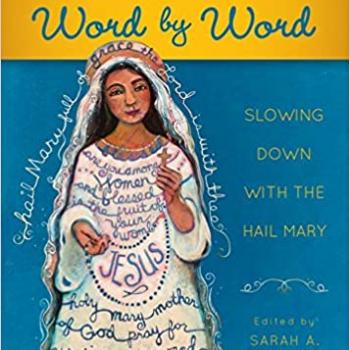One of the reigning errors of our insecure, perpetually-offended culture is the Approval One is the Rejection of All Others fallacy. So allow me to be perfectly clear: My love of homeschooling is in no way a rejection of our Catholic schools.
Not for a moment. Those who pay attention in real life know that I put quite a lot of effort into steering families towards their local Catholic schools whenever I can.*
Thus in the busyness of getting the new school year going, I was dismayed to have several different parents spontaneously volunteer to me — in flesh life, not just internet parents — that one of the reasons they were happy to have left their local Catholic school was because the kids weren’t being taught the Catholic faith there.
Not that bad isn’t very good.
There wasn’t any particular muckraking. Just, “Gosh, I was paying all this money for my kids to learn the faith, and it was not being taught.”
The telling moment: A mother waxing about the amazing world of religious education opened up to her no-longer-in-Catholic-school family, now that her kid was using the Faith and Life textbooks.
Now I happen to love F&L. It’s my go-to spine for a religious ed program. But this isn’t some obscure program imparting mysteries unfit for the great unwashed. This is just a normal religious education textbook, used in thousands of parishes around the country.
Being wowed by Faith and Life when you’ve just spent a year or more at a Catholic school would be like being wowed by Sadlier-Oxford’s vocabulary books when you’ve just done a year of SAT-verbal prep. Um, yeah, it teaches the topic. But that’s what it’s supposed to do.
So what’s going on at St. Blandings?
I’m well aware of the patches of dissent that plague many parishes and schools around the nation. But the parents I heard from weren’t talking to me about dissent. Their children weren’t being taught anything false; they were simply not being taught the depths of the truth.
I think what I was hearing this week was something milder and much more pernicious: Catholic schools viewing their primary mission as being financially-viable in a highly competitive education market.
Pick your master.
I’m an accountant by trade. I understand the financials. Parents want a good academic education for their children, and Catholic schools enter the game with the odds stacked against them. By definition, to pay private school tuition is to pay for your child’s education twice: Once in taxes to fund the public school your child doesn’t attend, and then a second time to pay for the school you’d actually choose.
It’s a hard sell. Catholic schools are under tremendous financial pressure to try to nab just enough of the I-Have-Money-to-Burn market that they can stay afloat. Barring a massive community of very wealthy faithful Catholics, the easiest catch is to push good academics on the broader not-so-Catholic set. The not-so-Catholics are maybe not so keen on dropping $15K for their kid to study Faith and Life.
A Catholic education is worth sacrificing for.
The irony is that faithfully-Catholic families are the target of parochial-school enrollment guilt: If you really cared about your child’s faith, and the good of the Church, you’d send them to us.
There’s truth behind the pitch. Families who are serious about forming their children in the faith will sacrifice — in time, in money, in labor — to ensure their children have the best possible formation in their faith that they can possibly get.
Likewise, all Catholics should be ready to put their money where their catechism is when it comes to supporting faithfully-Catholic schools, even if they have no children to enroll.
But when a family drops out of St. Merchant’s Parochial only to be wowed by Faith and Life, we’ve got a disconnect.
Sadly, every dropout causes the administrative spiral to pick up speed: If you can’t keep the Catholic families, you have to water the theology program just a bit more, in hopes of nabbing a few more non-Catholics to fill those empty desks.
Radical change means radical sacrifice.
For the St. Anodyne’s of this world, there’s a hard choice. To choose to teach the Catholic faith in depth and breadth is to choose to alienate good paying customers. There’s a market for Catholic education, but it’s full of large families with stay-at-home moms and piles of loans from Christendom. To choose to serve that market is to take the risk that you won’t find enough faithfully-Catholic sponsors to keep the school out of the red.
Catholicesque education, on the other hand, seems to pay the bills. It’s the safer choice. This side of the grave.
*This post isn’t about public schools, but yes, I am well aware of the many situations in which the local government-run school is truly the best available option. Likewise, though I’m leery of school-homing, I’ll even go so far as to say there’s a time and place for boarding schools.
–> It’s as if I think parents are responsible for choosing the best education for their children, and that no single solution could possibly be the one-and-only answer for every single in the child in the world. Look here to learn more about where I got that idea.
Life of Grace Cover image courtesy of Aquinas and More Catholic bookstore.













